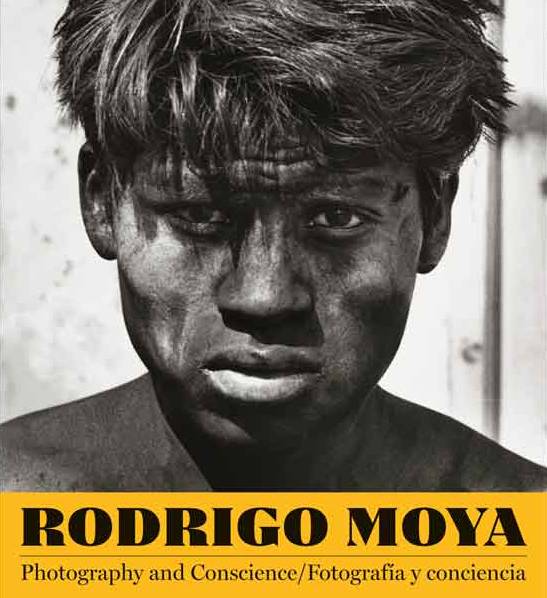


SAN MARCOS, TX—The Wittliff Collections at Texas State University has opened Rodrigo Moya: Photography and Conscience / Fotografía y conciencia. The first retrospective of Moya’s career to be exhibited in the United States, these 90-plus images reveal his vision and precision in an important chapter of the history of twentieth-century Mexican photography. On view through July 3, 2016, the exhibition celebrates the University of Texas Press publication of the new Wittliff Collections series book by the same name.
A prominent Mexican documentary photographer, Rodrigo Moya (b. 1934) began as a photojournalist in 1955. He covered the convulsive period that shook Latin America during the 1950s and ’60s, including the guerrilla movements in Guatemala and Venezuela, the invasion of Santo Domingo, and the Cuban Revolution. Acclaimed for his social photography as well, these images by Moya are also often charged with political ideology.
Moya abandoned photography as a profession in 1968 to take advantage of his experience as a journalist, dedicating himself to writing and editorial projects. Alongside this work, however, he continued to photograph, primarily the sea and its people, as well as other subjects such as the countryside, the streets of Mexico, religious processions, and people — those anonymous as well as famous.
The exhibition RODRIGO MOYA: Photography and Conscience / Fotografía y conciencia was curated by Carla Ellard of the Wittliff Collections, and it is part of FOTOSEPTIEMBRE USA, the annual international photography festival based in San Antonio Texas.
The Wittliff Collections are located on the seventh floor of Texas State’s Alkek Library in San Marcos, between Austin and San Antonio. Exhibition hours, directions, parking information are online. For questions, call 512.245.2313 (press 0).
THE BOOK
RODRIGO MOYA: Photography and Conscience / Fotografía y conciencia, the first English-Spanish bilingual retrospective of the photographer’s career is part of the Wittliff Collections’ Southwestern & Mexican Photography book series published by University of Texas Press. The 12 x 12 inch volume includes 115 black-and-white photographs grouped into seven thematic suites, each briefly introduced by Moya. Distinguished historian Ariel Arnal provides an essay describing Moya’s impact as a documentary photographer, while Moya writes about his journey to become a photographer in the volume’s introduction, “El nacimiento de las imágenes / The Origin of the Images.” Including photographs that have never been published before, Rodrigo Moya adds an important new chapter to the history of twentieth-century Mexican photography.

RODRIGO MOYA
Moya’s photography is receiving renewed attention and acclaim in the twenty-first century, including the Espejo de Luz for his photographic career at the VI Bienal Mexicana de Fotoperiodismo and the Medal of Photography Merit from the Sistema Nacional de Fototecas (Instituto Nacional de Antropología y Historia). Moya’s work is held by major private and public collections and museums, including the Center for Creative Photography (Tucson); the Los Angeles County Museum of Art; the Museum of Fine Arts, Houston; the Nelson-Atkins Museum, Kansas City; the San Francisco Museum of Modern Art; the Santa Barbara Museum of Art; and Casa América Catalunya (Spain). In addition to writing about his experiences as a photographer, Moya is an award-winning author of short fiction, including the story collections De lo que pudo haber sido . . . (What Could Have Been) and Cuentos para leer junto al mar (Stories to be Read by the Sea).
Photo: Rodrigo Moya, © Dr. Haroldo Dies
- Facebook
- Twitter
- Instagram
- Youtube
Email List